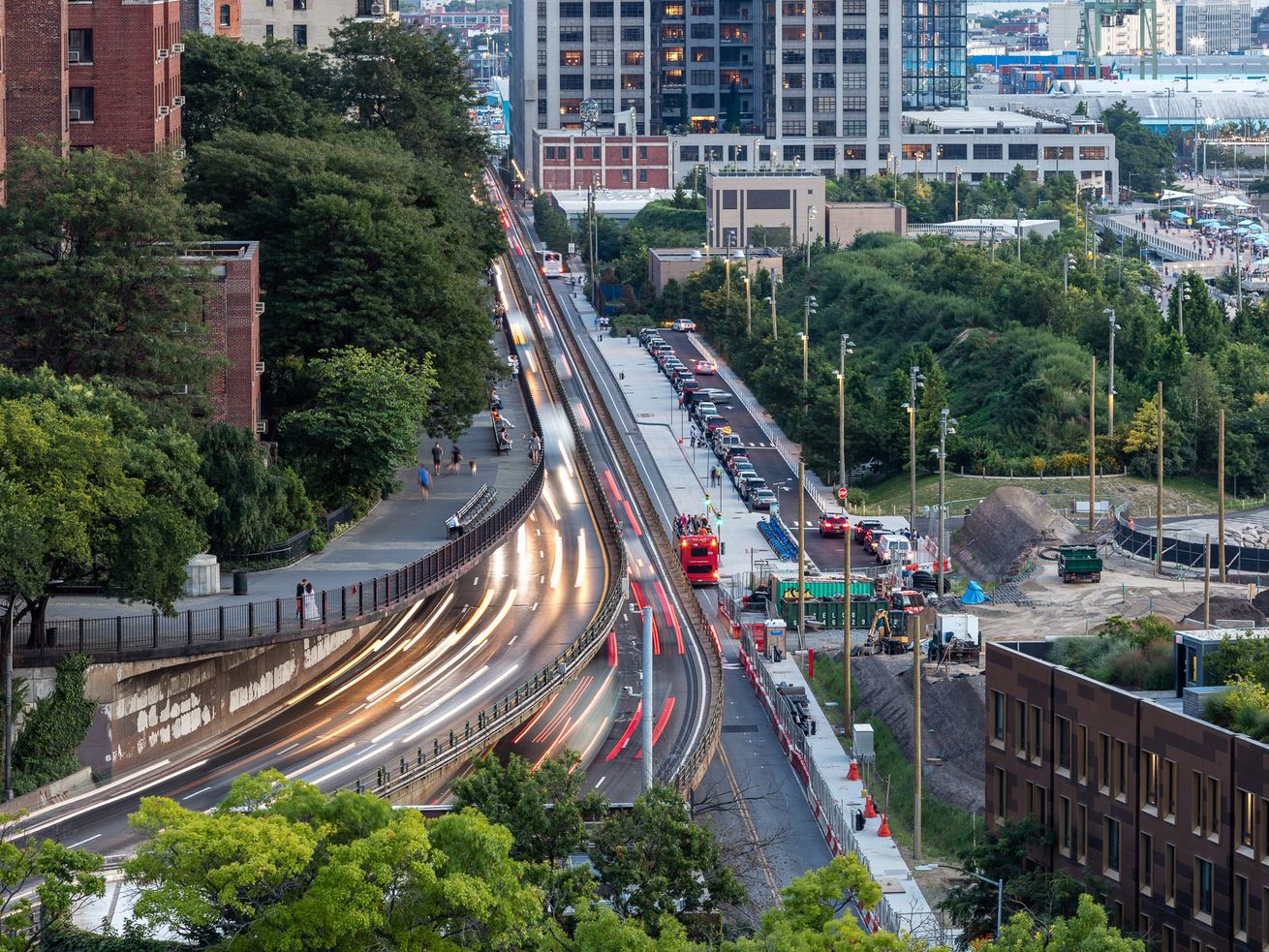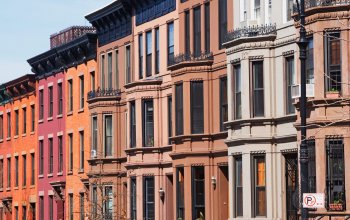
A fix for the BQE is in state hands, say NYC lawmakers

An $11 billion tunnel is the latest proposal to fix a crumbling stretch of the BQE. But that idea, and several others, won’t go anywhere without help from the state.
Proposals to repair a deteriorating stretch of the Brooklyn-Queens Expressway have grown increasingly ambitious over the last two years. What began as a rigid city vision to reconstruct the 1.5-mile triple-cantilever in Brooklyn Heights, has been seized as an opportunity to reinvent the Robert Moses-era infrastructure, with several proposals put forward by architects, politicians, and civic groups.
This week an up to $11 billion three-mile bypass tunnel that would stretch from the Prospect Expressway to Bedford Avenue—allowing part of the existing expressway to convert into a grand street-level boulevard—became the latest concept to enter the fray. Engineering firm Arup introduced the tunnel in a City Council-commissioned report surveying proposals for the expressway as one of two recommended solutions. The other option, known as the capped highway, would cost $3.2 billion to shift the expressway to Furman Street and burry the roadway with an expansion of Brooklyn Bridge Park—a riff off of the BQP and tri-line proposals.
But if transportation officials are to move beyond what has turned into a years-long process of throwing ideas at the wall, settle on a plan, and move forward with an urgently needed rehabilitation—truck weight limits are already in place and repairs to temporarily extend the life of triple cantilever are set to begin in 2021—the state must take on a greater role in the project and work with the city to form a new governing body to get the ball rolling. Without as much, the BQE project is essentially at a stand still, says Department of Transportation (DOT) Commissioner Polly Trottenberg.
“Without state corporation, I’m not sure I can say today what the path forward would be,” Trottenberg told lawmakers at a City Council transportation committee hearing. “One of the challenges that I think we’ve landed with is city-owned solutions are just not comprehensive enough to garner political support.”
To that end, the state Senate and Assembly must craft legislation to create a new “I-278 corridor governing body,” according to Arup’s report. That bill, the report says, should create an equal partnership between city and state officials to develop a solution for the crumbling section of the BQE, but must also take a comprehensive look at the entire interstate highway “to create a viable pathway to a smaller future roadway for the entire corridor.” That entity could have the power to implement tolls, acquire land, and even build.
Trottenberg says the city is on board with the idea and is in talks with state lawmakers. Carlo Scissura, the president of the New York Building Congress and the head of a 17-member expert panel appointed by Mayor Bill de Blasio that studied the BQE, takes that concept a step further and says city, state, and federal officials must come together in a new entity modeled after the Gateway Development Commission, a public authority formed by New York and New Jersey in 2019 to construct two long-stalled Hudson River rail tunnels.
“Unless there is a true entity that has teeth, that has money and has actual power to build, nothing will get done,” Scissura said during the Council hearing.
City Council Speaker Corey Johnson also recognized the lack of consistent leadership on the issue that has led the city to the predicament it’s in today. “Part of the difficult place we’re in now is that no one has fully owned this,” said Johnson. “We need a set of folks involved in the process to manage this, to keep their eyes on the prize.”
New York State DOT took up the responsibility of BQE repairs in 2006, but ultimately abandoned a proposed fix in 2011 and left the effort to city officials. The state DOT did not immediately return requests for comment.
Seven years later, city transportation officials put forward two multi-billion dollar plans to renovate the BQE: a temporarily elevated roadway or an incremental, lane-by-lane approach. Both plans faced fierce community pushback and spurred a wave of alternative proposals and studies. Arup’s City Council-financed report, which was conducted to the tune of $245,000, is the latest to weigh in on the project. Versions of the capped highway have already been proposed by the Bjarke Ingels Group and Mark Baker, the former chairman of the Brooklyn Bridge Park Conservancy’s board of directors, but the endorsement of a tunnel took several transportation advocates by surprise.
Aside from coming with astronomical price tags, tunnels bring with them a slew of logistical challenges and have a reputation for cost overruns and project delays—just look at the problem-plagued Big Dig project in Boston. A BQE-replacing tunnel would have to navigate the dense web of existing subway and water main infrastructure beneath Downtown Brooklyn. Emergency exits, among other things, would also need to be included in the design. To do that, the city would need access to private property along the route—likely exerting eminent domain to acquire MTA and privately owned property. It would be a tall order, but feasible if city, state, and federal officials can get on the same page, according to one transportation expert.
“It’s a question like everything else, it comes down to money,” Michael Horodniceanu, who served as the president of MTA Capital Construction from 2007 to 2017 and oversaw the Second Avenue subway, told Curbed in a interview last year on the possibility of a BQE tunnel. “You need the means and the political will to allocate the dollars to do it.”
Johnson has not endorsed the tunnel, the capped highway, or any other approach. Arup stopped short of studying the radical possibility of eliminating the highway altogether. Trent Lethco, a transportation consultant with Arup, noted during the Council hearing that finding an alternative to the vehicular road was not part of the mandate given to his firm by the City Council (despite Johnson expressing interest in the idea) and said that such an undertaking would ignore the BQE’s role as a major truck corridor.
“While I’m sure everyone would like to see New York be the utopia of sustainable mobility, the reality is we have to recognize that this is one of the busiest highway links in the state of New York,” said Lethco. “It’s a significant amount of traffic and absent some very heavy-handed policy measures, we’ll still have to deal with that traffic.”
Love where you live


